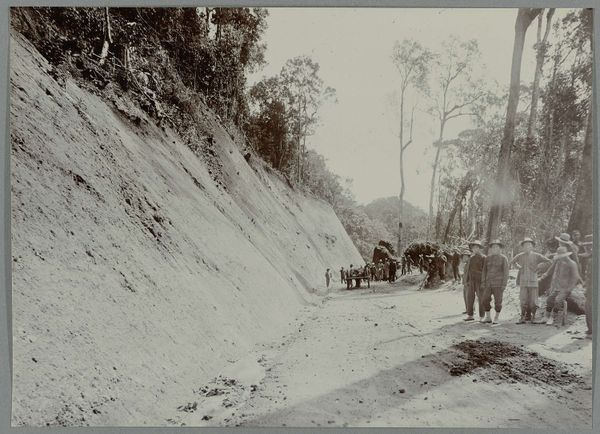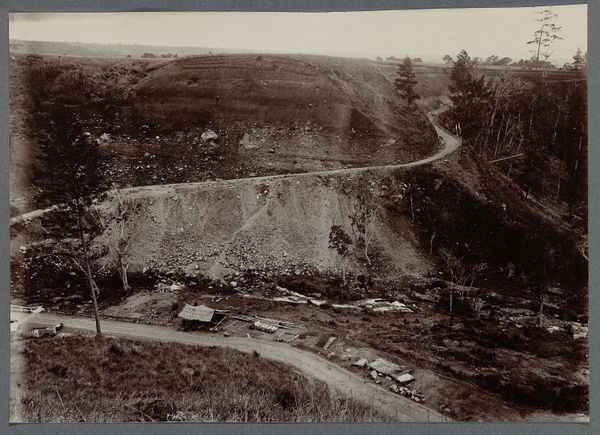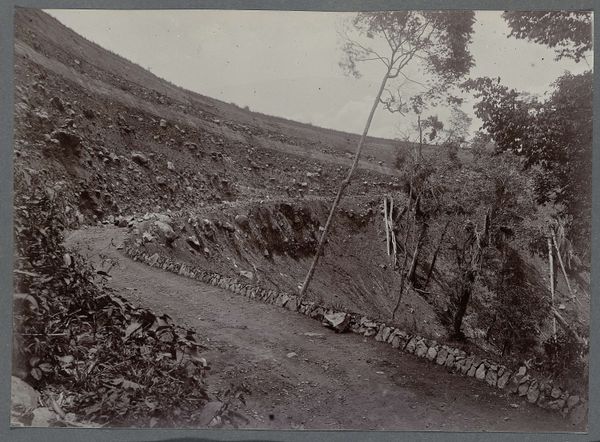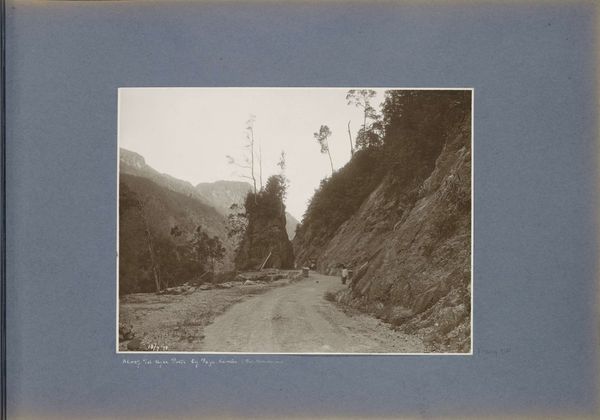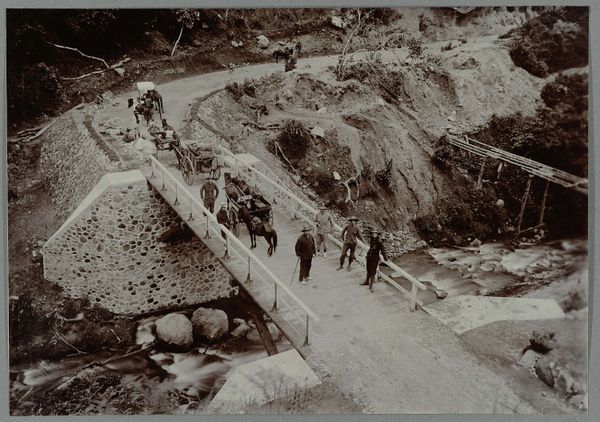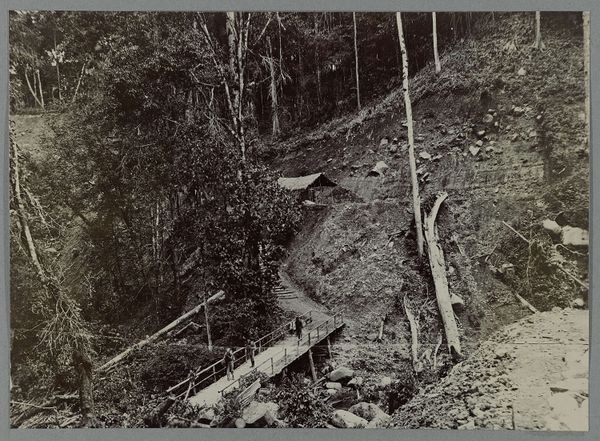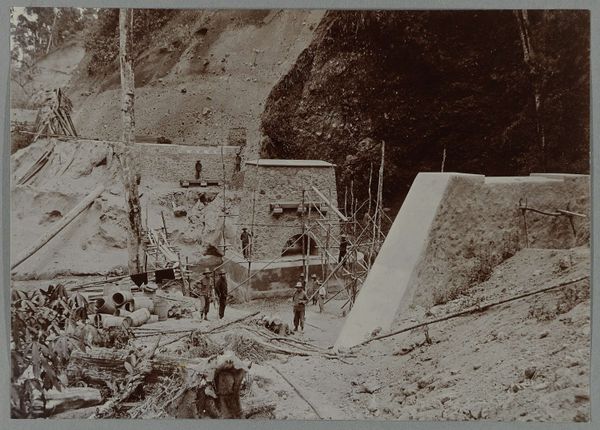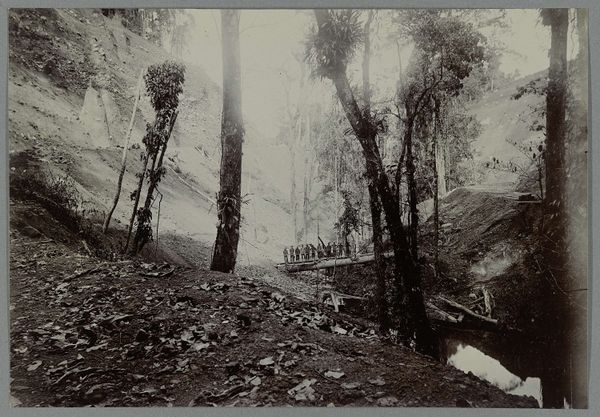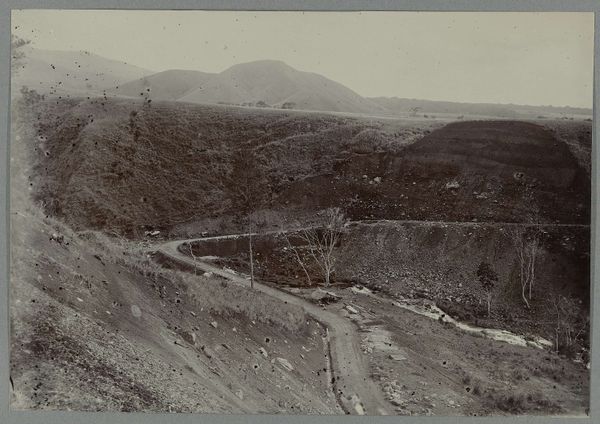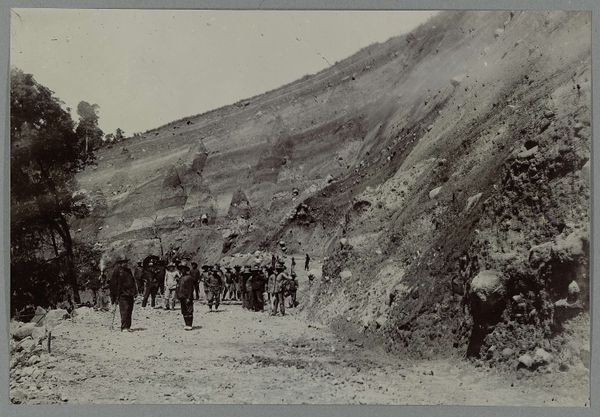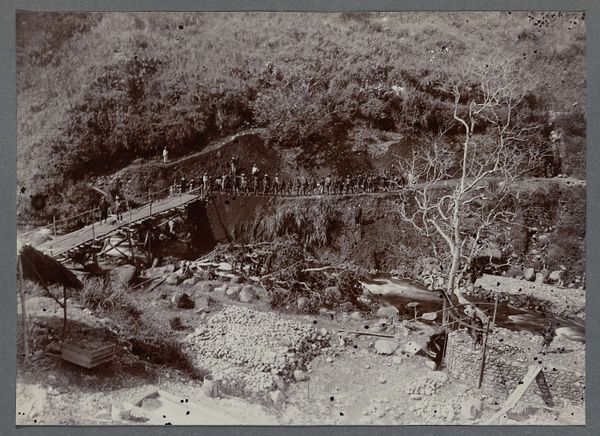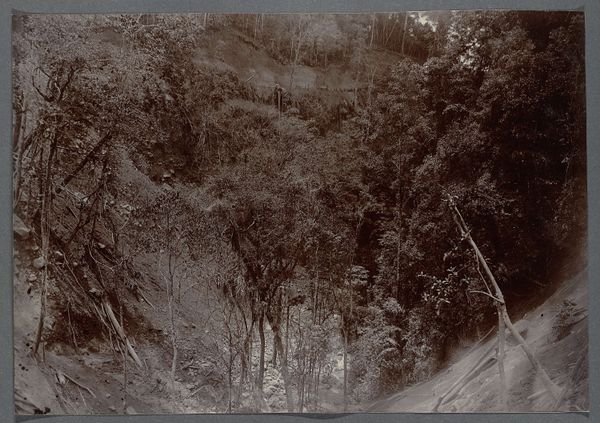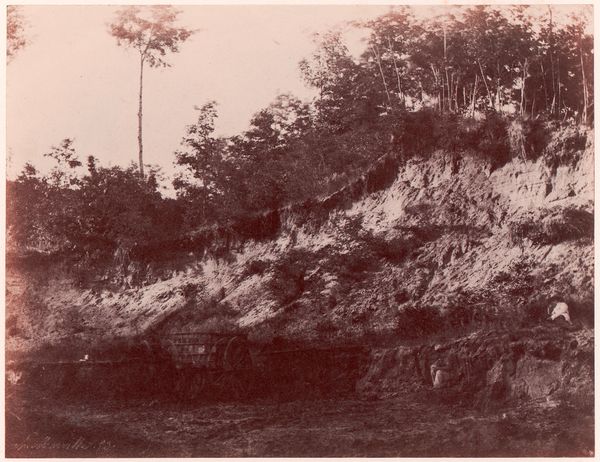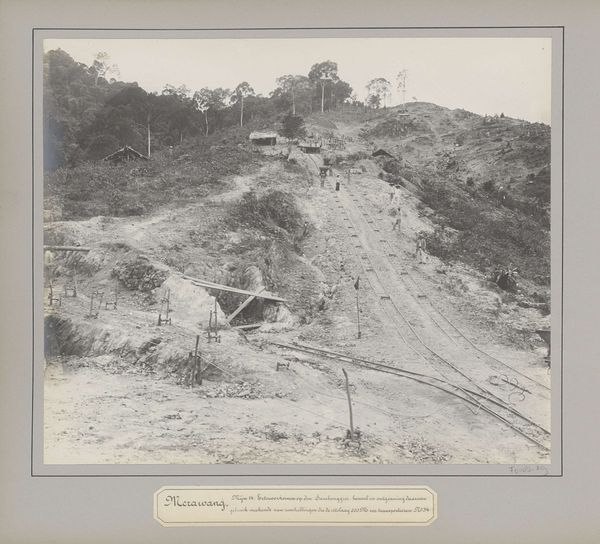
photography, photomontage
#
landscape
#
photography
#
photomontage
Dimensions: height 138 mm, width 200 mm
Copyright: Rijks Museum: Open Domain
Curator: This photomontage, created anonymously between 1903 and 1913, documents ‘Aanleg van de weg langs een helling van de Woih ni Tanggo Besi’ which translates to ‘Construction of the road along a slope of the Woih ni Tanggo Besi’. Editor: What strikes me is the dramatic earthiness. The tones are almost monochromatic, dominated by browns and greys that seem to emphasise the brutal manual labor depicted. It looks monumental, in its stark exposure of human effort. Curator: Indeed. Notice how the strong diagonal lines of the hillside create a dynamic, almost overwhelming composition. The arrangement, coupled with the almost topographic style, highlights a tension between the natural incline and the imposed geometry of the road. Editor: I am struck by the image of workers almost dwarfed by the landscape. They’re not just building a road, but fundamentally changing this natural place. The photograph is filled with figures. Look closer and you begin to wonder about the cultural cost of the construction. What was lost in the name of progress? Curator: That tension is key. The photograph’s high contrast strengthens that feeling. The bright areas representing exposed earth draw attention away from those minute figures that inhabit the center of the image. These choices draw your eye to the artificiality of this 'natural' scene. Editor: Absolutely. We read images through layers of historical and social conditioning. This artwork asks us to contemplate themes that we have found represented elsewhere—humankind's struggle against, or imposition on, nature, which have historically been celebrated as evidence of technological ingenuity. Here we are offered evidence of human effort, and perhaps exploitation. Curator: In terms of artistic merit, one can find much to explore in this work. Despite its documentary feel, its compositional rigor is clear. The image has that semiotic charge of meaning. Editor: Considering what we now know about historical representations of landscape, it will remain an intriguing artwork, that can provide an intersectional view. Curator: It does highlight those intrinsic qualities in a compelling manner.
Comments
No comments
Be the first to comment and join the conversation on the ultimate creative platform.
